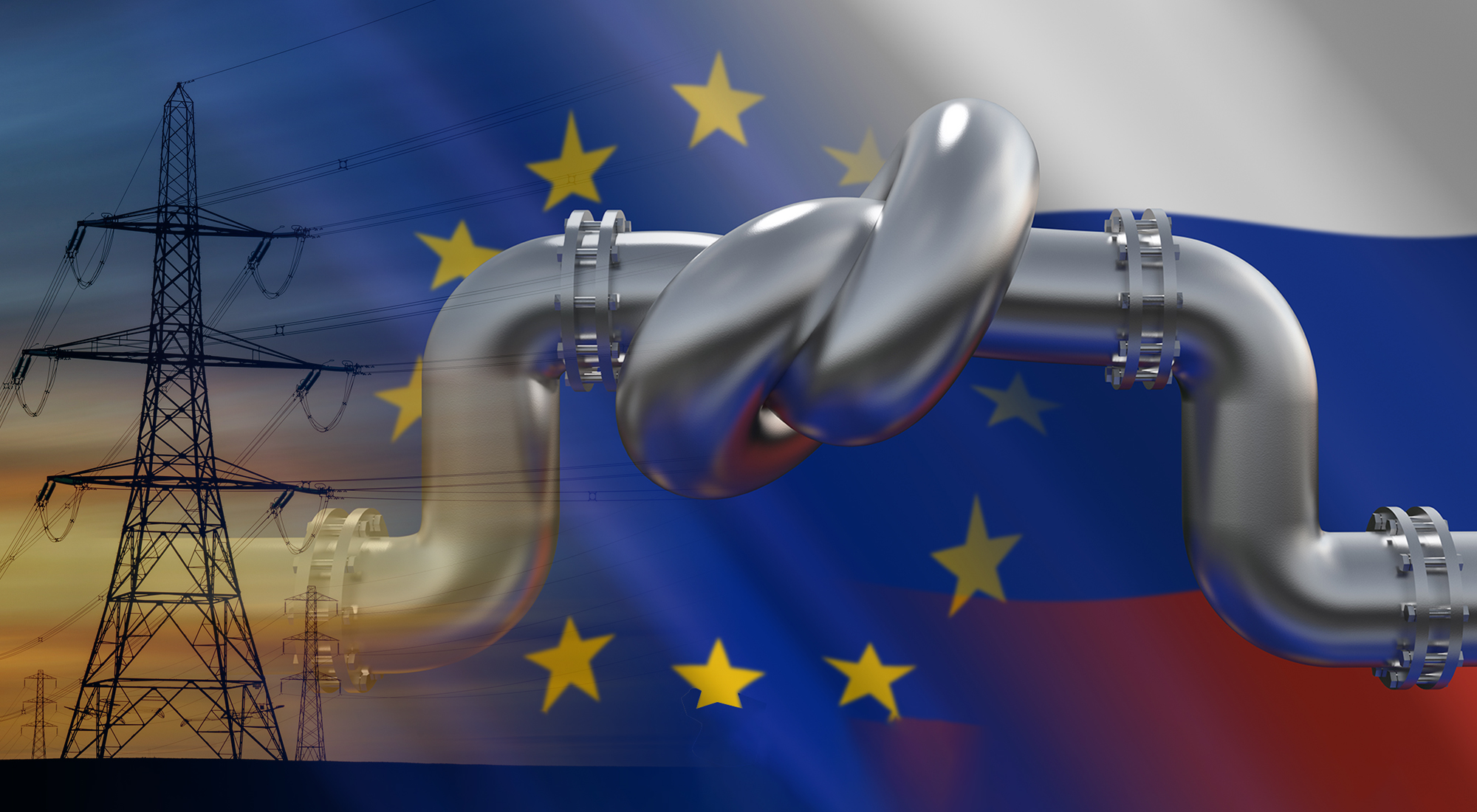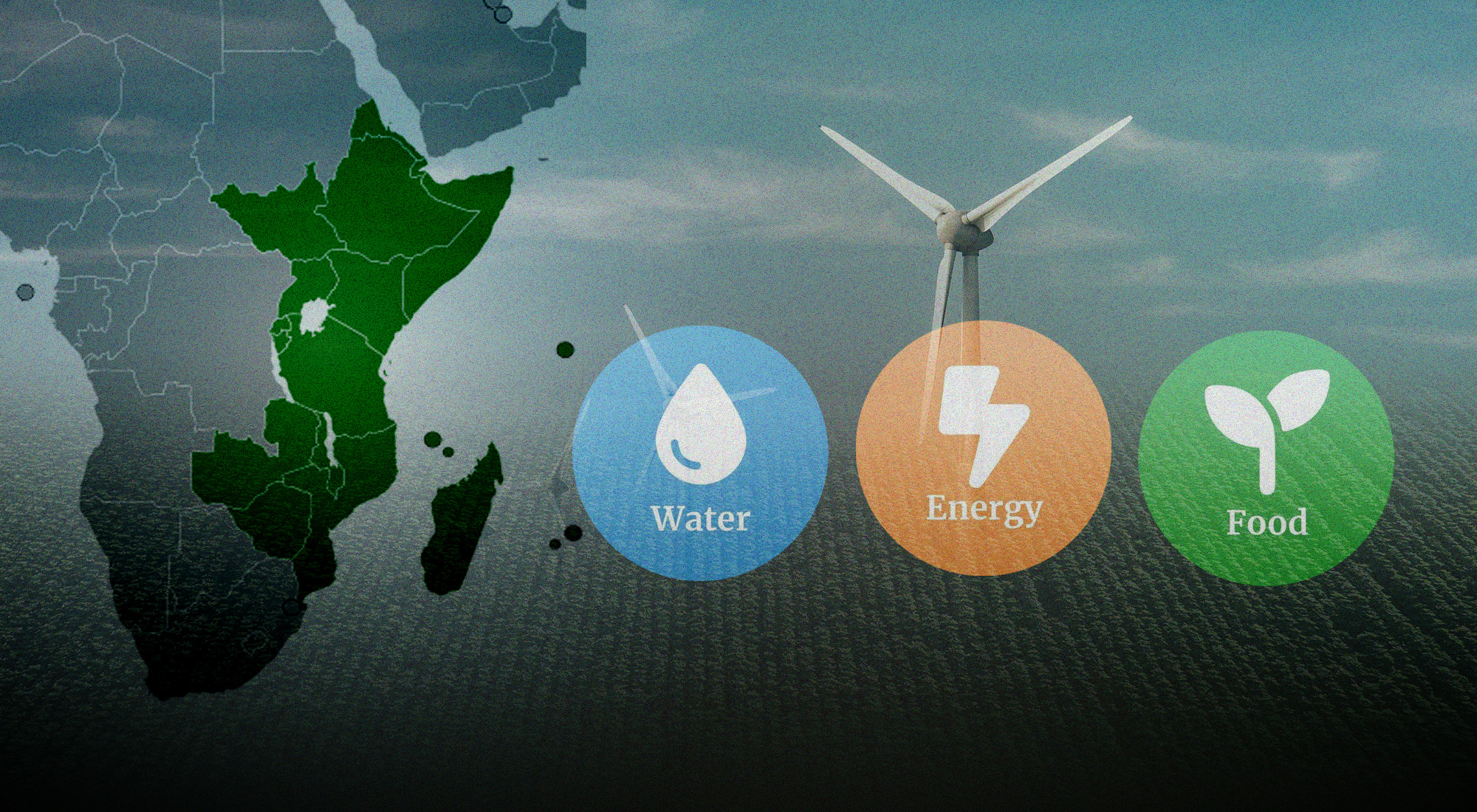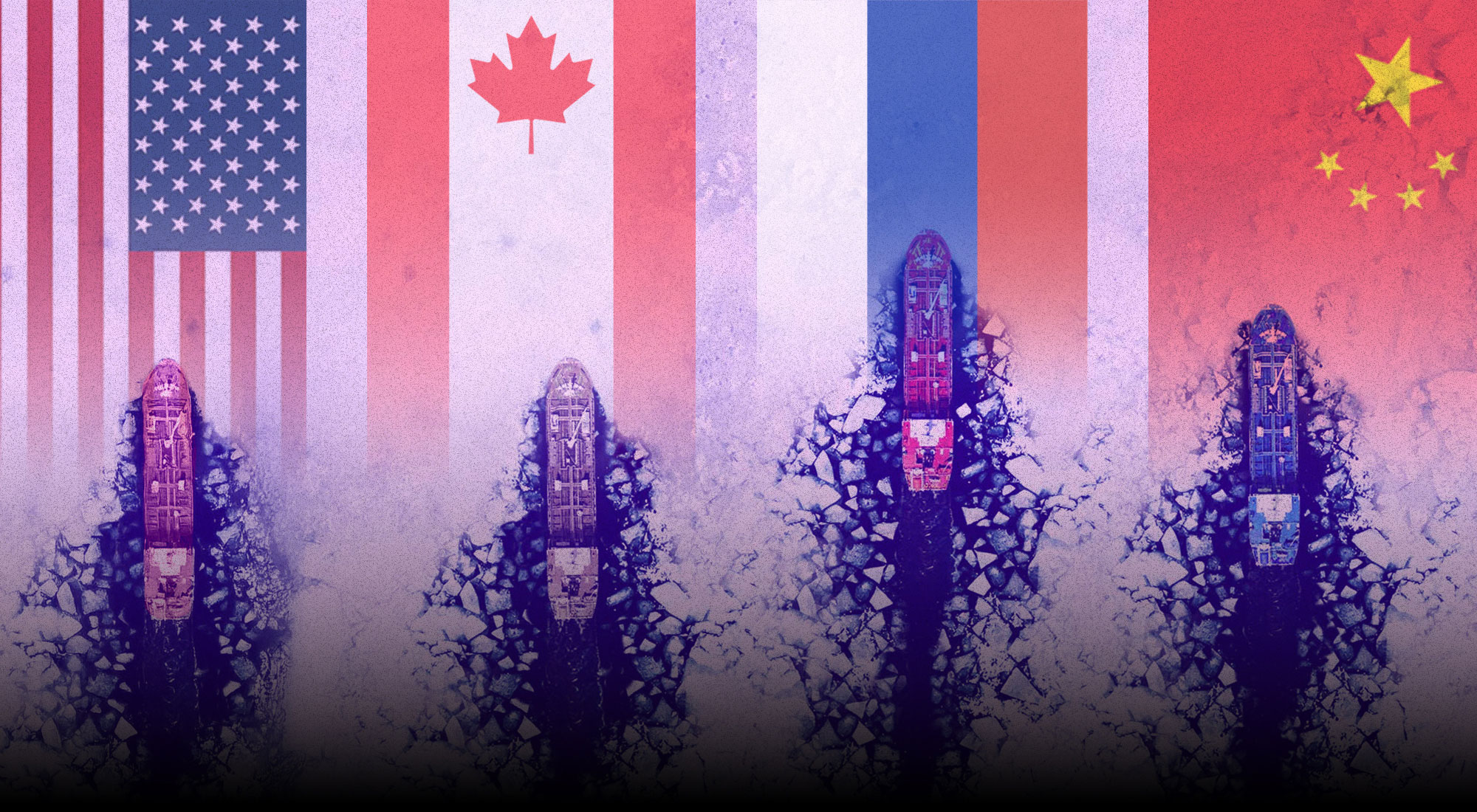Introduction
The brutal economic and energy decoupling between Russia and Europe is provoking large scale shock waves for Europe’s energy security, energy transition, and economic and social stability, and is having major implications for energy markets and policies beyond Europe.
Europe is facing multiple, unprecedented crises, notably a severe gas supply deficit: in the year 2021, Russia’s state-owned Gazprom supplied approximately 130-140 billion cubic meters (bcm) of pipeline gas annually to the European Union (EU) and about 16 bcm of Liquefied Natural Gas (LNG), representing about 41-43 % of EU total imports.[1] In 2022, Russia’s total yearly pipeline gas supplied to the EU is expected to decrease by around 50% to 55-60 bcm (supplies of LNG from the Yamal LNG plant have been steady).
This is a consequence of Russia’s progressive reduction, and then termination, of gas supplies to most of its European customers and most of the supply routes over the period June 2021-September 2022. The sole exceptions to reductions in gas supply consists of gas piped to two NATO countries, Hungary and Turkey, which are routed via the TurkStream pipeline through the Black Sea. Reduced volumes of gas are also being supplied to Italy, Slovakia, and South East European countries, some of which are still flowing via Ukraine. The phase out of Russian coal and oil imports (respectively about 22% and 35% of the EU’s total demand in 2021[2]) is due to EU sanctions: Poland and Germany were notably large buyers of high-quality coal from Russia whereas most EU nations were mostly buyers of Russian crude and diesel. An EU oil embargo is also about to enter into force on crude oil (5 December 2022) and refined products (5 February 2023).
The EU and United Kingdom (UK) have been facing record gas prices (over ten times their average of past years at their highest level and thirty times more than the average in the United States). Moreover, there has been a sharp contraction of gas demand due to demand destruction in the industrial sector as a result of factories reducing or stopping production altogether (notably in the glass or petrochemical sectors) and some fuel switching to fuel oil. This gas crisis has triggered a global hunt for LNG, with European buyers siphoning off all possible spot LNG cargoes traded in the world to fill up storages ahead of the winter and leasing well over 20 Floating Storage Regasification Units (FSRUs) – the bulk in Germany (with a total of 6) – so as to ramp up LNG import capacity for the coming years. Indeed, while the EU’s LNG import capacity is large on paper, a third of it is located in the Iberian Peninsula, which has only very limited pipeline interconnection capacity with France and the rest of Europe. As of the beginning of November, the EU’s gas import bill has been multiplied by over five times compared to 2021.[3]
The EU’s electricity price crisis is related to the marginal pricing system, which calls primarily on gas-fired power plants in the merit order to balance electricity supply and demand, but also to the exceptionally low availability of the French nuclear power generation fleet (only about 285 Terawatt hours (TWh) generation in 2022 versus over 400 TWh in past years, with up to 32 out of 56 nuclear reactors in maintenance[4]). Other factors underlying high electricity prices include the structural trend to phase out flexible generation (coal, nuclear, gas) and the intermittency of hydroelectric power and renewable energy. With soaring gas prices, electricity prices reached levels between 500-700 euro per megawatt hour (EUR/MWh) for days in a row, equivalent to ten times the average levels of past years and one of the highest in the world. EU governments have thus been working to decouple the gas and electricity prices with various options on the table. They have taken several measures to alleviate the impacts of soaring prices on industries, small and medium sized companies, and households. Individual European households have been called upon to make large electricity savings for this winter and beyond, notably to reduce peak load. At a policy level, energy sobriety is now increasingly being considered in addition to savings and energy efficiency measures.
While the price tensions have eased with the exceptionally mild weather experienced in October, the EU faces a “perfect energy storm” which is a threat to competitiveness and social stability. Economic recession is unavoidable in many EU economies and load shedding, i.e., planned and temporary shut-downs of power to parts of the electrical grid, may also happen.
What is unfolding in Europe’s energy markets is having, and will continue to have, major consequences globally. This briefing looks into the global implications of the European energy crises and reviews sectors such as oil, natural gas, electricity, hydrogen, and mobility.
- Oil market readjustments and implications for oil trade and demand
EU Member States used to import just under half of Russia’s total oil and refined products exports before the war in Ukraine. Out of a total of 2.2 million barrels per day (mbd) supplied from Russia, 700 thousand barrels per day (kbd) were pipeline supplies to Central Europe, Poland, and Germany via the so-called Druzhba system, about 300 kbd were seaborn crude supplies, and 1.2 mbd were refined products supplied mainly by sea, notably diesel.[5] The EU’s largest buyers of Russian liquids were Germany, followed by the Netherlands. European buyers have not waited for the embargo to come into force to reduce purchases of Russian liquids and have already been working to secure new supplies for several months already. The most difficult challenge is to secure enough diesel supplies; as a result of this restricted supply, diesel prices have typically been higher than prices of other gasoline products at filling stations. Most challenged are countries located along the Druzhba pipeline system, which have to secure alternative shipments often via ports, and then onwards by rail, making logistics complicated and more costly. For this reason, alongside geopolitical factors, Hungary has secured an exemption from the embargo. With the embargoes soon coming into force, EU markets will increasingly rely on supplies from the Middle East, India, and to a lesser extent, possibly China and the United States.
Two trends are unfolding: Russia faces the need to accept an additional transfer of value towards crude oil traders and buyers across the world, who buy Russian cargoes at a discount and then even resell processed products to Europeans. Russian suppliers typically have to deal with longer transportation routes, higher cargo lease rates, and a need to offer shipping and insurance services as well as price discounts. Lately, the United States has been successfully lobbying for a price cap on Russian oil imposed via insurance and shipping industries (the exact terms and participating countries still have to be clarified) which would allow continued transactions provided the value of the oil is below the cap level. These discounts have proven to be a major opportunity for emerging economies struggling with their depreciating currencies versus the dollar, and hence higher fuel import costs. They have also reduced Russia’s revenues while still ensuring markets remain supplied.
Another trend is that the large Switzerland-based traders (Glencore, Gunvor, Trafigura, Vitol, Mercuria) – which would typically handle at least 60% of Russia’s crude and product exports – are now progressively giving room to new traders based in Singapore, Hong-Kong, and other countries, which progressively handle cargoes sometimes in the range of well over 100,000 barrels per day. This shift of trading geographies will soon have to be accompanied by a shift in trading currencies away from the dollar, pound or euro, with still uncertain prospects, unless the price cap is being followed, as it would authorize using “Western” currencies, insurance, and shipping services. This shift is happening, yet it will also require working in compliance with sanctions as working around them might trigger secondary sanctions. The weeks of adjustment to the European oil embargo, especially in the absence of a return to the nuclear deal with Iran, may create turbulences in oil and product markets, yet soaring prices above 100$ in a context of recession in several OECD economies and large US stock withdrawals are unlikely to be seen.
All in all, while European governments have all reintroduced fossil fuel subsidies to ease the soaring gasoline prices (fueled by OPEC+ policies and by the weakening euro versus the dollar), they are still sticking to plans to phase out the sale of thermal combustion engines by 2035 and to accelerate the roll-out of clean mobility. The push towards electric mobility is seen across the OECD and in China, and combined with the depreciating currencies in emerging economies, should accelerate the peak oil demand time and slow down the increase in oil demand in the coming years.
- Natural gas markets: Russia charters into uncertain territory while Europe turns to alternative LNG suppliers
Russia was the world’s largest gas exporter, mainly via pipelines to Europe but also recently to China, and was about to become one of the world’s top five LNG exporters (with Sakhalin, Yamal LNG and the super Arctic 2 project due to be commissioned by 2023-2025). As a consequence of its aggression on Ukraine, Russia has largely lost the European gas market by its own decision (thus losing around 15 years of high gas export revenues leading up to the EU’s energy transition and consequent significant reduction in imports from Russia), and triggered an unprecedented demand, and revenues, for US exporters. Moreover, Russia is facing serious challenges to advance its LNG projects without Western technologies, and will need huge efforts, time, and investments to manage to redirect its gas exports via new pipelines to other markets such as China, Pakistan, or India. This matters strongly to the rest of the world in several ways:
- As Europeans have been forced to seek alternative LNG supplies to offset the missing supplies from Russia, global buyers without long-term contracts have been deprived of the ability to source spot LNG. Even buyers with long-term contracts have seen, in several cases, supplies moving to the minimal level in order to redirect volumes to Europe where prices were highest.
- Several emerging economies have been forced to turn to dirtier fuels such as coal and oil, and will probably never go back to LNG, not least because the FSRUs, which were key in opening up these markets to LNG imports in a rapid manner, have now been relocated to Europe. Burning heavy fuel oil in power generation or more coal in thermal plants, of course, comes with negative consequences for air quality and greenhouse gas emissions.
- LNG markets will remain tight for several years, at least until 2026, because the EU and UK will need to continue buying every available LNG cargo, especially in 2023, as European storages are being replenished in the quasi-total absence of Russian pipeline gas. Next year, the EU’s import capacity of LNG will have increased sharply by well over 60 bcm from the current 157 bcm, but global available LNG will remain largely unchanged if one considers the very few capacity additions and the overall level of outages.[6] Significant additional LNG export capacity is only expected to come online by 2026 from North America and Qatar, and beyond, the EU is expected to continue relying on very high LNG import volumes for at least a decade. Indeed, on the supply side, whatever political configuration develops in Russia as a consequence of the war, exports to Europe will never go back to 2019 levels, and some resumption of supplies, in theory possible, would only be very limited due to buyers shying away from Russian “blood” gas, even if discounted. Additionally, Russia’s key export corridor – the Nord Stream pipeline – was recently significantly damaged and is unlikely to be repaired. Beyond Russia, other current pipeline gas suppliers such as Norway or Algeria are not expected to make any significant addition in the future. On the demand side, while the EU will do its utmost to reduce gas demand, this process will be longer than anticipated and will still require high gas imports due to the sharp and to a large extent irreversible decline of domestic EU production. Finally, the EU will still need gas in the residential and power generation segments, and replacing gas in the industry will take time.
- Many gas resource holding countries, notably in Africa, now see an additional rationale to develop their resources and invest in upstream development in order to gain a competitive and strategic advantage.
- Overall, oil indexation and long-term contracts clearly gain new traction, with the EU facing the risk of being the only OECD gas import dependent economy relying so heavily on spot transactions, and hence, possibly paying higher prices than other importing nations. Some EU companies will have to sign up to new long-term contracts. The increased security of supply role for state-owned energy companies such as ENI or Uniper could be used in this direction, but it is expected that energy majors such as TotalEnergies will play a key role.
- Last but not least, LNG markets will remain very tight but also very volatile, with a lasting premium to be expected for supplies to Europe as opposed to Asia, as seen in past years. This year was remarkably smooth in terms of supplies as China and Japan took much less LNG, enabling the bulk of US LNG imports to be redirected to Europe to make up for some of the shortfall from Russia. This was an echo to the situation seen after the Fukushima nuclear reactor meltdown in 2011, when higher Russian pipeline gas supplies to Europe enabled Qatar to direct all its supplies to Asia (and notably Japan) to help ease Japan’s energy crisis. Yet, any unexpected event on the supply and demand side can easily strain this very fragile equilibrium.
- It remains to be seen if, how much, and when Russia will be able to expand its gas infrastructure and exports to China beyond the current projects in place.
- Electricity, hydrogen and raw materials: Electrification and decarbonization of electricity are top priorities, but bottlenecks stand in the way
The energy crises have prompted an unprecedented effort by the EU to accelerate the roll-out of solar and wind technologies, with governments seeking to facilitate permitting and procedures and boost private investment, acknowledging that insufficient efforts and investment had actually taken place in past years. The pressure is high not least because governments have been forced to temporarily bring back coal-fired power generation wherever possible in order to address risks to electricity supply security (about 15 gigawatts). This has major implications:
- There is now a global race for offshore wind developments, notably between Europe, the United States and Asia. This makes several key equipment such as installation vessels, copper and cables, as well as skills, very scarce, which will lead to more delays and add to the cost increases.
- There is another race to develop local manufacturing of clean technologies, notably solar PV modules, electric equipment, battery cells, recyclable wind blades, and servicing equipment such as vessels, etc. In order to support this effort, clean industrial policies are being beefed up in all OECD economies; however, this may also result in a greater risk of protectionism and unfair subsidies. Countries with the best chances of success are those with predictable and simple regulation and energy costs, and a clear pathway to decarbonize energy supplies. The EU has lost on its ability to ensure competitive energy supplies for the time being and will have to fight hard on all these fronts if it is to remain attractive for large investments.
- The EU’s green hydrogen leadership ambition is now more complex and challenged in a situation of scarce electricity supply and longer-than-expected decarbonization of the electricity grid. The EU is indeed planning to support the roll-out of large-scale decarbonized hydrogen supply and use mainly from renewable energy sources (electrolysis of renewable electricity) and give less of a priority to the other options, such as blue hydrogen (from natural gas steam methane reforming coupled with carbon capture and storage), or pink hydrogen (from electrolysis of electricity produced by nuclear energy). Producing clean hydrogen or byproducts in Europe at large scale will no longer be possible in the foreseeable future and can only realistically be envisaged after 2030, and possibly only around 2035. At the same time, the EU’s hydrogen needs are now more specific and involve (1) the decarbonization of fossil hydrogen used in refineries; (2) replacing the lost domestic ammonia production with low carbon imports; (3) and helping industries reduce their gas or coal demand by directly transitioning to hydrogen when electricity is not an alternative. As a consequence, EU economies will now first have to source ammonia abroad, due to the destruction of the EU’s domestic ammonia production, and prepare to make it low carbon. Moreover, the role of hydrogen and byproducts will have to be downsized to the “no regret options” – that is regardless of the other options because benefits exceed costs and there are unlikely to be better alternatives through electrification – as opposed to all the possibilities hydrogen could offer but which are incompatible. That being said, Spain, the UK, Denmark, and Sweden could rapidly become larger green hydrogen producers and consumers in specific clusters. The EU will have to acknowledge that a more color agnostic approach will be needed to give some room for natural gas-based or nuclear-based clean hydrogen if demand from the “no regret options” is to be met at competitive prices and in a not-too-distant future.
- Last but not least, this push towards clean technologies and electrification in Europe will also take place in an accelerated manner in the rest of world and will fuel tensions for supplies of raw materials. Mining investments or production can be expected to be subdued for many materials due to high economic risks, local governance challenges, water scarcity, and higher costs due to ESG requirements. This is another bottleneck and will lead to much higher volatility and geopolitical tensions, and drive major investments into recycling and alternative battery chemistries, for example. Raw materials will definitely be another bottleneck that will limit the acceleration potential of clean technology deployment in many parts of the world.
- Against this backdrop, and with rising electricity prices, nuclear power will gain renewed attraction even if it is only a longer-term solution given the long lead time to make plants operational, especially in newcomer countries where the entire regulation and expertise has to be built up. If successful, the first small modular reactors can be expected to become best sellers in many countries in the world as they could provide clean, secure, and competitive electricity.
Conclusion and perspectives for the global climate governance
The energy crises and responses by governments all across the world point to near hopeless perspectives to limit global warming to 1.5°C. The latest climate disasters around the world remind us of how devastating climate change can be at the current +1.1°C temperature increase. Should temperatures rise to 2.4-2.6°C, as is the world’s current trajectory, one can only imagine how devastating this would be. The EU can be expected to continue making the utmost efforts to progress with greenhouse gas mitigation strategies and their implementation. One of the key consequences of the current energy crises is that the world will now have to implement the most cost-efficient solutions to rapidly reduce greenhouse gas emissions and avoid new lock-ins such as through cement, steel, and water desalination solutions powered by carbon intensive grids. This will inevitably have to aggressively address deforestation, acidification of oceans, coal-fired power generation, and fugitive methane emissions from the energy sector and agriculture, while boosting energy efficiency and savings as well as promoting circular economy value chains. The Just Energy Transition Partnerships being developed with South Africa and also now pursued by the Asian Development Bank – whereby funds are allocated to close coal-fired power plants before their technical lifetime, support affected workers, and build up alternative systems – offer a promising tool to advance and could be joined by funding institutions from OPEC countries.
References
[1] European Commission, EU Quarterly Gas Market Report Q4 2021, http://bitly.ws/wnbI.
[2] Eurostat, “EU Energy Mix and Import Dependency,” March 4, 2022, http://bitly.ws/wnbP.
[3] European Commission, “New Reports Highlight 2nd Quarter Impact of Gas Supply Cuts,” October 17, 2022, http://bitly.ws/wMDp.
[4] EDF, “EDF Updates Its 2022 French Nuclear Output Estimate,” November 3, 2022, http://bitly.ws/wME7.
[5] “Factbox: How Much Oil Does the European Union Import from Russia?” Reuters, May 31, 2022, http://bitly.ws/wMEQ.
[6] See International Energy Agency (IEA), Gas Market Report, Q3-2022, http://bitly.ws/wncc.








